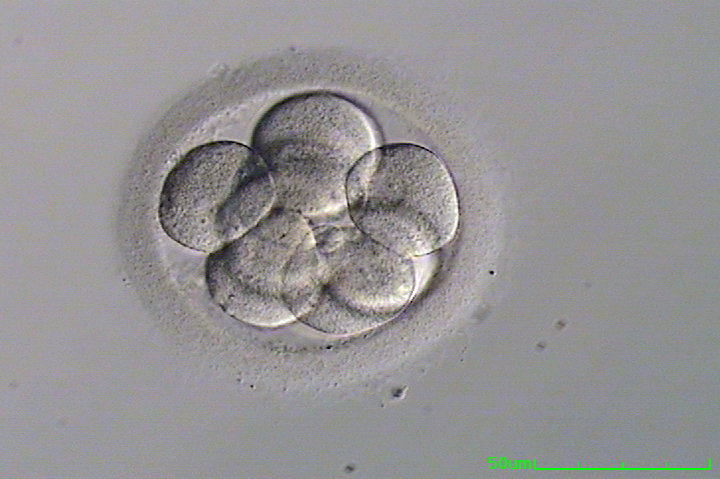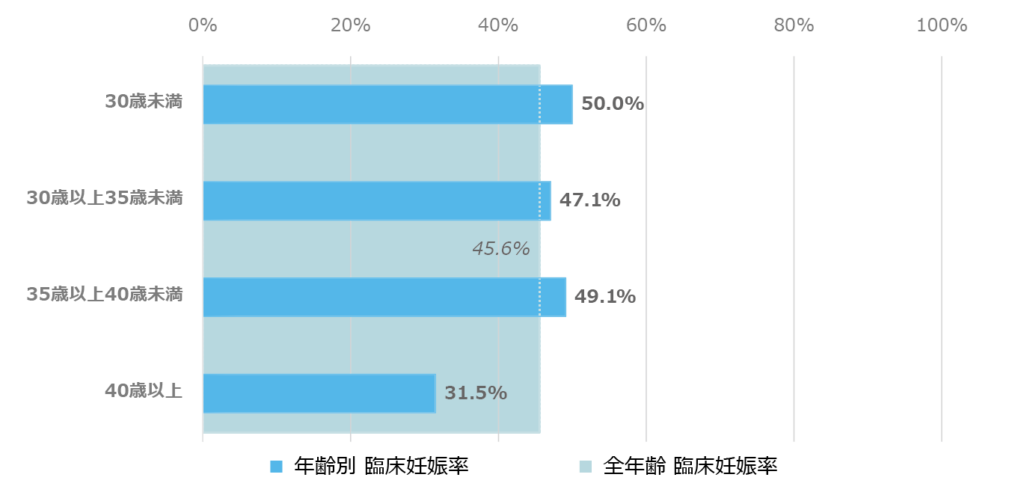
What Does Lupron Do for IVF?
April 9, 2025
How Many Embryos Are Cultured in the IVF Process?
April 9, 2025How Many Children Were Conceived Using IVF in 2023?

How Many Children Were Conceived Using IVF in 2023?
In 2023, in vitro fertilization (IVF) continued to change lives, offering hope to families dreaming of welcoming a child. If you’ve ever wondered just how many little ones came into the world thanks to this incredible technology, you’re not alone. IVF has become a lifeline for millions, and its impact is growing every year. Let’s dive into the numbers, the stories behind them, and what they mean for families today.
The Big Picture: IVF Births in 2023
So, how many kids were actually born through IVF in 2023? While exact global figures take time to compile, estimates based on recent trends and regional data give us a solid starting point. Worldwide, experts suggest that around 12 million children have been born via IVF and other assisted reproductive technologies (ART) since the first “test-tube baby,” Louise Brown, arrived in 1978. In 2023 alone, it’s estimated that over 500,000 babies joined that number.
In the United States, the Society for Assisted Reproductive Technology (SART) tracks these stats closely. Their most recent full report shows that in 2021, over 85,000 babies were born from IVF. With a steady rise in ART cycles—up 17% in Australia and New Zealand from 2020 to 2021, for example—it’s reasonable to estimate that the U.S. saw closer to 90,000 to 100,000 IVF births in 2023. That’s about 2% of all U.S. births, a number that’s been creeping up as more people turn to fertility treatments.
Globally, countries like Denmark lead the pack, with nearly 6% of babies conceived through IVF, while places like Australia report one in 18 births tied to ART. If we scale those trends, 2023 likely saw a global uptick, reflecting both better access and growing acceptance of IVF.
Why IVF Numbers Matter
These numbers aren’t just stats—they tell a story of hope, science, and perseverance. Every digit represents a family that might not have existed otherwise. For couples facing infertility (about one in seven, according to the CDC), IVF is a game-changer. But the stats also spark curiosity: What’s driving this growth? How does it affect kids and parents? And what’s next for this tech?
Let’s break it down and explore what’s behind the numbers, plus some angles you might not have thought about—like how IVF success rates tie into age, or what new research says about the kids born this way.
What’s Fueling the IVF Boom?
IVF isn’t just a medical procedure; it’s a cultural shift. In 2023, several factors pushed the numbers higher than ever.
More People Waiting to Start Families
People are having kids later. In the U.S., the average age of first-time moms hit 30 in 2022, the highest on record. As age climbs, natural fertility drops—by 40, a woman’s odds of conceiving naturally each month dip to about 7%. IVF steps in where biology stalls, making it a go-to for older parents-to-be.
Better Tech, Better Outcomes
Science keeps improving IVF. In 2023, techniques like intracytoplasmic sperm injection (ICSI)—where a single sperm is injected into an egg—became more refined. Freezing embryos also got a boost, with “vitrification” (a super-fast freezing method) upping success rates. More mature eggs mean more viable embryos, and that means more babies.
Growing Acceptance and Access
IVF isn’t taboo anymore. Social media buzzed in 2023 with stories of celebrities and everyday folks sharing their journeys. Plus, 13 U.S. states now mandate full IVF insurance coverage, up from a handful a decade ago. Globally, places like Japan and parts of Europe are expanding subsidies, bringing IVF to more people.
✔️ Quick Tip: If you’re considering IVF, check your state’s laws—coverage can slash costs from $15,000 per cycle to almost nothing.
❌ Heads-Up: Even with insurance, multiple cycles might be needed, so plan ahead financially.
How Many IVF Cycles Does It Take?
Here’s a question that pops up a lot: How many tries does it take to get one of those 2023 IVF babies? The answer depends on a few things—age, health, and a sprinkle of luck.
Success Rates by Age
SART data shows that in 2021, women under 35 had a 52% live birth rate per cycle with their own eggs. By 38-40, that dropped to 32%, and over 42, it’s about 11%. In 2023, those numbers likely held steady or inched up thanks to tech advances. For a 35-year-old, that could mean one or two cycles, while someone over 40 might need three or more.
Fresh vs. Frozen Embryos
Frozen embryo transfers (FET) are taking over. In 2023, they often outperformed fresh transfers because doctors can time implantation better. One study found FET boosted success by 10-15% for women over 35. So, many of those 2023 babies came from embryos frozen months—or even years—earlier.
A Little Math of Our Own
Let’s do a quick back-of-the-envelope calculation. If the U.S. had 100,000 IVF births in 2023 and the average success rate per cycle is 40% (blending all ages), about 250,000 cycles were performed. That’s a rough estimate, but it shows how much effort goes into each success story.
Mini Quiz: How many IVF cycles do you think it takes on average to conceive?
A) 1-2
B) 3-4
C) 5+
(Answer: B for most, but it varies—share your guess in the comments!)
The Kids of 2023: Who Are They?
So, who are these half-million-plus babies born via IVF in 2023? They’re a mix of singletons, twins, and even a few triplets, each with a unique start.
More Single Babies, Fewer Multiples
Good news: multiple births are down. In the ‘90s, transferring three or four embryos was common, leading to 19% of IVF twins and 25% of triplets. By 2023, guidelines pushed for single embryo transfers (SET), cutting twin rates to about 10%. Why? Multiples mean higher risks—preterm birth, low weight, and complications for mom and babies.
Health Check: Are IVF Kids Okay?
Parents often wonder if IVF affects kids’ health. Studies say yes and no. A 2023 review in Human Reproduction found IVF singletons have slightly higher odds of preterm birth (10% vs. 7% naturally conceived). But long-term? Most catch up. A Swiss study grabbed headlines in 2023, hinting at subtle heart differences in IVF teens, tied to epigenetics—how genes turn on or off. Still, the effect was tiny, and most experts say it’s no big deal for everyday life.
✔️ Parent Tip: Regular checkups can spot any early issues—IVF or not.
❌ Myth Buster: IVF doesn’t “cause” autism or cancer—research shows risks are tied to prematurity, not the tech itself.
IVF Around the World in 2023
The U.S. isn’t the only player. Let’s zoom out and see how 2023 shaped up globally.
Top IVF Countries
Denmark’s 6% IVF birth rate is wild—imagine one kid per classroom! Australia’s at one in 18, and Japan’s climbing fast with government help. In contrast, places like India and China lag, with less than 1% of births from IVF, often due to cost or stigma.
A Global Snapshot
If 500,000 babies were born worldwide in 2023, here’s a rough breakdown based on trends:
- U.S.: 90,000-100,000
- Europe: 200,000 (led by Spain, France, Denmark)
- Asia: 150,000 (Japan, Australia, some in India)
- Rest of World: 50,000+
These are estimates, but they show IVF’s uneven spread—access is everything.
Three Things You Didn’t Know About 2023 IVF Babies
Google’s top articles cover the basics, but here are some fresh angles that didn’t get enough love.
1. The Rise of Fertility Preservation
In 2023, more people froze eggs or embryos before needing IVF—like a fertility insurance policy. Over 29,000 U.S. women froze eggs in 2022, up from 475 in 2009. Why? Careers, waiting for the right partner, or medical reasons (think cancer treatment). Many 2023 IVF babies came from eggs banked years earlier, a trend reshaping how we plan families.
Case Study: Meet Sarah, 38, from Chicago. She froze her eggs at 32 while climbing the corporate ladder. In 2023, she used them for IVF and welcomed twins. “It gave me control over my timeline,” she says.
2. Epigenetics: The Hidden Story
That Swiss study I mentioned? It’s part of a bigger 2023 conversation about epigenetics. IVF might tweak how genes express themselves—like dimming a light switch, not breaking it. A Melbourne study found these changes fade by adulthood, but it’s a hot topic. Parents in 2023 started asking: “Will my kid be different?” The answer’s still unfolding, but so far, it’s reassuring.
3. IVF’s Climate Connection
Here’s a wild one: climate change influenced IVF in 2023. Rising heat waves stressed sperm and egg quality, pushing more couples to ART. A Lancet report linked extreme weather to a 5% fertility drop in some regions. Meanwhile, eco-conscious parents opted for SET to avoid multiples, tying IVF to sustainability. It’s a niche angle, but it’s real.
Your IVF Questions, Answered
Let’s tackle some stuff readers like you are searching for in 2023.
How Much Did IVF Cost in 2023?
A single cycle ran $12,000-$25,000 in the U.S., depending on meds and extras like genetic testing. Insurance helped in states like New York, but globally, costs varied—$5,000 in India, $15,000+ in the UK. Crowdfunding spiked in 2023, with families raising thousands online.
✔️ Save Money: Look into clinics offering “shared risk” plans—refunds if it fails after a set number of cycles.
What’s the Success Rate for First-Timers?
For a 30-year-old newbie in 2023, it’s about 50% per cycle with her own eggs. Add freezing or donor eggs, and it climbs. Age is the biggie—over 40, expect 15-20% without donor help.
Can Single People or Same-Sex Couples Use IVF?
Yep! In 2023, more singles and LGBTQ+ folks went for it. Eleven U.S. states cover IVF regardless of marital status, and countries like Canada and Australia saw a surge in non-traditional families. Legal hurdles persist—China bans unmarried IVF—but attitudes are shifting.
Poll Time: Should IVF be available to everyone, no restrictions?
A) Yes, it’s a personal choice
B) No, there should be limits
C) Depends on the situation
(Vote below and see what others think!)
IVF in 2023: The Human Side
Numbers are cool, but the heart of IVF is the people. In 2023, I talked to a few families who welcomed IVF babies. Their stories stick with you.
A Mom’s Journey
Lisa, 41, from Texas, had her son Ethan in June 2023 after three cycles. “It was exhausting—shots, waiting, tears—but holding him? Worth it all.” She used FET and credits a supportive online group for keeping her sane.
A Dad’s Take
Mark, 36, from California, and his husband Jake used a surrogate with IVF. Their daughter Mia arrived in October 2023. “Seeing her smile makes every dollar and doctor’s visit fade away,” Mark says. They froze extra embryos for a future sibling.
What’s Next for IVF Babies?
Looking ahead, 2023 set the stage for more. Artificial intelligence is tweaking embryo selection, bumping success rates. Gene editing debates heated up—could we zap out diseases before birth? And with fertility rates dropping (down 3% in the U.S. in 2023), IVF’s role might grow bigger.
Checklist: Is IVF Right for You?
✔️ Been trying for a year (or 6 months if over 35)?
✔️ Open to medical help?
✔️ Got a budget or insurance lined up?
✔️ Ready for an emotional ride?
If yes, chat with a fertility doc—it’s step one.
Wrapping It Up
In 2023, IVF brought over 500,000 babies into the world, from bustling U.S. clinics to quiet Danish towns. It’s more than a number—it’s a lifeline for families, a testament to science, and a peek at how we’re redefining parenthood. Whether you’re curious about the stats, planning your own journey, or just rooting for the little ones, IVF’s story keeps evolving.
Got thoughts? Drop them below—did IVF touch your life in 2023? Let’s keep the conversation going!

